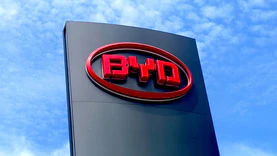On May 14th, Tencent Holdings released its first quarter financial report for 2025, stating that its R&D expenditure in the first quarter reached 18.91 billion yuan, a year-on-year increase of 21%. Data shows that Tencent's revenue in the first quarter was 1800.2 billion yuan, a year-on-year increase of 13%; Gross profit of 100.49 billion yuan, a year-on-year increase of 20%; The operating profit was 69.32 billion yuan, a year-on-year increase of 18%.
During the reporting period, Tencent's R&D expenditure reached 18.91 billion yuan, a year-on-year increase of 21%; Capital expenditures amounted to 27.48 billion yuan, with a year-on-year increase of 91%. Ma Huateng said, "In the first quarter of 2025, our high-quality revenue maintained a solid growth trend. AI capabilities have made substantial contributions to businesses such as performance advertising and evergreen games. We have also increased our investment in new AI opportunities such as Yuanbao applications and AI within WeChat. ”
Tencent executives revealed that the company currently holds sufficient high-end chips to support the continuous training of future generations of models, which undoubtedly lays a solid foundation for Tencent's deep cultivation in the AI field. In addition, Tencent also plans to deeply integrate AI and gaming business, and flexibly deploy AI in various forms in games. Tencent executives also admitted that the deployment of AI in large-scale competitive games is still in the early stage, and there is still broad exploration space in the future.
As of March 31, there has been a new change in the number of employees at Tencent, with a total of 109414 employees. As of March 31, 2024, the number of personnel has increased to 104787. In terms of salary, in the first quarter of 2025, Tencent Group's total compensation cost for three months reached RMB 34.1 billion. Compared with the 26 billion yuan in the same period last year, it has surged by 31.15%. Tencent stated that the number of employees hired by the group will be adjusted from time to time based on actual business needs, while employee salaries are determined according to industry practices.











